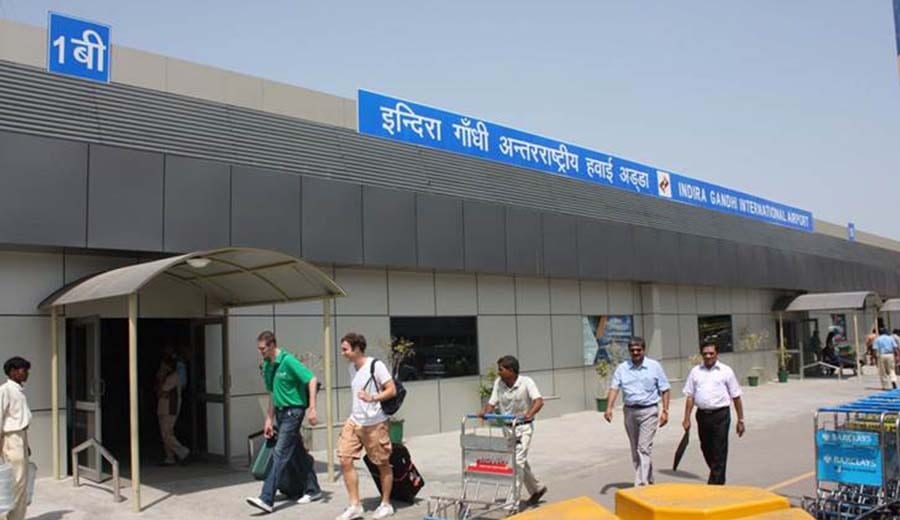Indira Gandhi International Airport
Indira Gandhi International Airport – The Largest Airport in India
Named after Indira Gandhi, the former Prime Minister of India, it is the largest and the busiest airport in India since 2009 both in terms of passenger trafficking and cargo trafficking. The airport managed over 57.8 million passengers in the fiscal year of 2016-17. It is the busiest airport in the world for Airbus A320 aircraft. This aviation hub is situated in Palam and is primarily for the civilians of New Delhi, the National Capital of the Country. The airport covers a sprawling area spread over 5,106 acres. It has an integrated International and Domestic terminal. T3 is a 9-level passenger terminal building and has 2 piers each 1.2 km long. Terminal 3 has become India’s and South Asia’s largest aviation hub with the commencement of its operations. It can hold and handle more than 40 million passengers. T3 is the 24th largest building in the world and 8th largest passenger terminal. This building can alone handle 34 million passengers annually. There is a separate Technical Area for VVIP passengers.
It is a massive improvement on the previous avatar. The Indira Gandhi International Airport received the Most Improved Airport Award in 2014. You relax before your departure from Delhi at the Plaza Premium Airport Lounge. The common facilities like Wifi, ample seats, clean toilets, stalls and shops for shopping and so on are there for all. The renovated sophisticated appearance ensures complete luxury for tired passengers and offers way more advanced facilities than many other important airports in the country. The airport was operated by the Indian Air Force earlier and then its management was passed onto the Airports Authority of India. In May 2006, the management of the airport was transferred to Delhi International Airport Limited (DIAL). The airport uses a much-developed and advanced system called Airport Collaborative Decision Making (A-CDM) to help keep track of the take-offs and landings on time.
On 21 August 2008, the airport inaugurated its 3rd runway 11/29 costing ₹10 billion. The runway has one of the world’s longest paved threshold displacements of 1,460 m (4,790 ft). The purpose of this large threshold displacement is to reduce noise generated by landing aircraft over nearby residential localities. The new runway started functioning on 25 September 2008. The Indira Gandhi Airport serves as a major hub for several Indian flights including Air India, Air India, IndiGo, Jet Airways, SpiceJet, GoAir, and Vistara. Approximately 80 airlines serve this airport. Currently, there are two active scheduled passenger terminals, a Hajj terminal, and a cargo terminal. Safdarjung Airport was built in 1930 and was considered the main airport of Delhi. Later operations moved to Palam Airport which was built during World War I. On May 2nd, it was renamed Indira Gandhi International Airport. Since then it today, it has emerged as one of the most prominent airports in our country. Except for the three budget airlines handled by Terminal 1, all other airlines operate their flights from Terminal 3. The cargo terminal is located at a distance of 1 km from T3. The cargo operations of the airport received the “e-Asia 2007” award in 2007 for “Implementation of e-Commerce / Electronic Data Interchange in Air Cargo Sector.”
Facility
Indira Gandhi International Airport (IGIA) is equipped with a range of facilities to provide a comfortable and convenient experience for travelers. Some of the facilities available at IGIA include:
- Check-in counters for various airlines
- Duty-free shopping outlets
- Multiple food and beverage options
- Lounges for premium travelers
- Currency exchange services
- Medical facilities
- ATM machines
- Free Wi-Fi
- Luggage storage and trolleys
- Car rental services
- Parking facilities
- Tourist information desk
These facilities aim to cater to the needs of travelers, whether they are in transit or waiting for their flight.
Runway
Indira Gandhi International Airport (IGIA) has three runways. The primary runway is 11,000 feet long and is capable of handling the largest aircraft in operation. The other two runways are used for takeoff and landing during busy periods and as backup runways. The airport has implemented the latest technology and equipment to ensure safe and efficient runway operations, such as instrument landing systems and runway lighting. The runways are maintained to the highest standards to ensure smooth and safe aircraft operations, even in adverse weather conditions. The airport is capable of handling a large number of aircraft movements per hour, making it one of the busiest airports in India.



